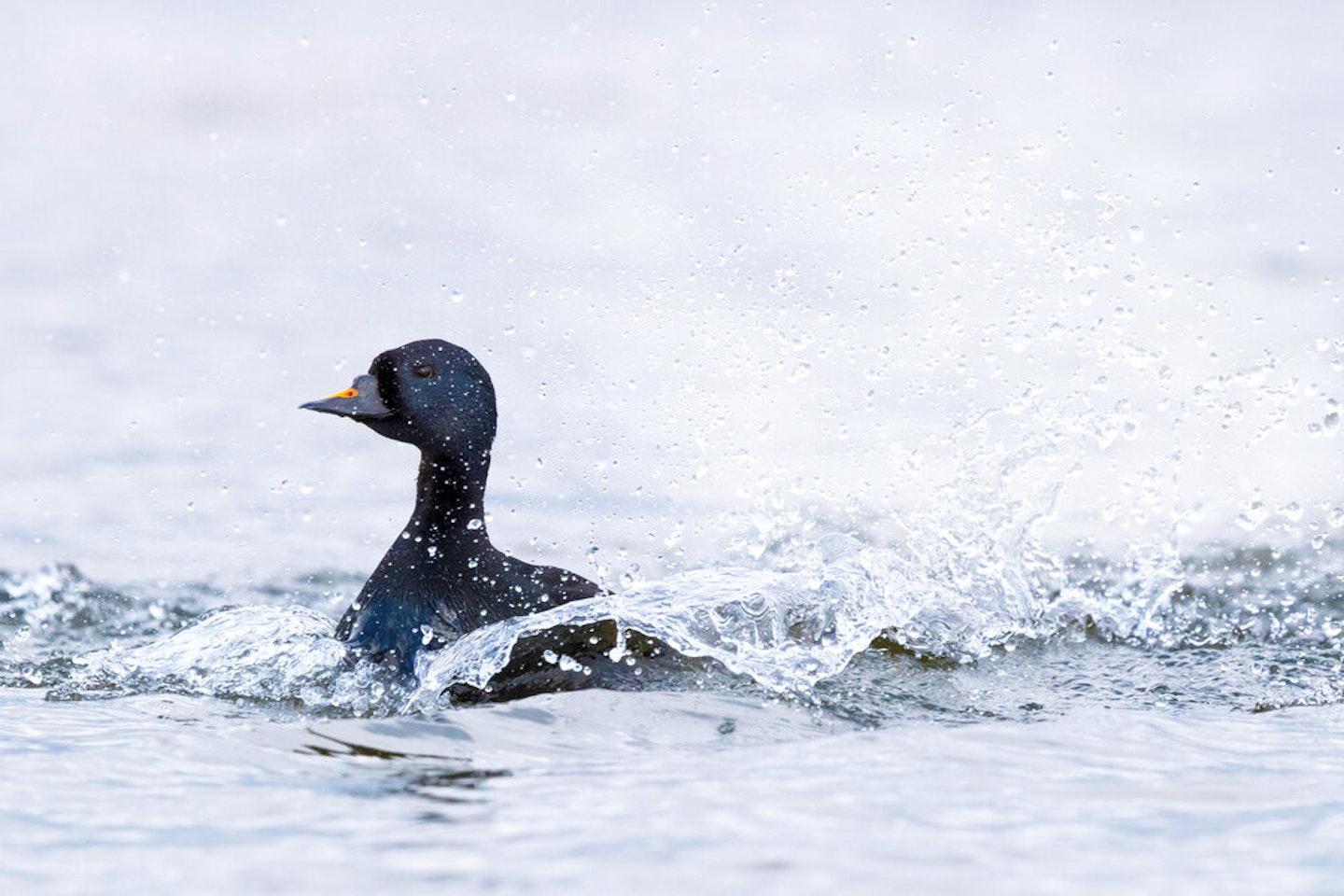August is a good month for migration. But September is a great month for migration. Everything seems to be on the move. It is time to really make the most of the birding hours. Here are five cracking birds, ‘on the move,’ to look for and enjoy this month.
Grey Phalarope
Grey Phalaropes are small, curious waders which breed in the Arctic and Iceland and pass our coasts in small numbers, wintering at sea. September storms drive them inshore and inland, when they can turn up in sheltered areas for a bit before heading back out to the open waves. Grey Phalaropes can be exceptionally tame as they swim around in little circles or pick from the edge. Don’t expect them to be wearing the red feathering of breeding plumage, as most will be in the grey and white of winter or at least the similar plumage of a first first-winter.
GLENN WELCH/ALAMY
Juvenile Black Tern

This small marsh tern (all marsh terns are small!) does not breed in the UK. In spring, they pass through in grey and black breeding plumage. In autumn, though, we mainly see juveniles, which are white beneath and scaly brown and grey above. They have black caps, and a thin dark patch on the front of the breast. They feed by picking morsels off the surface of water in flight. This may be on the coast, or on inland freshwater bodies.
BLICKWINKEL/ALAMY
Juvenile Kittiwake

With a breeding population of some 380,000 pairs, the Kittiwake is technically our most common breeding gull. That said, they are very much ‘sea gulls’, and if you do your birding any distance from the sea, they can be tricky birds to see. At the coast, though, in autumn, they are regularly seen at many sites. Adults have the dipped in black ink pale grey wings, but this year’s birds look very different, with a distinctive black ‘W’ on the wings. The plumage is somewhat like that of the tiny juvenile Little Gull and can also be confused, at distance, with the contrasting ‘triangular’ patches of the much rarer juvenile Sabine’s Gull.
CHRIS WEST/ALAMY
Common Scoter

As many as 100,000 Common Scoters winter off the coast of the UK. Most are concentrated around certain areas such as the coast of north Norfolk, Cardigan and Liverpool Bays, or off the north Lancashire coast, plus along the Moray Firth. They tend to sit offshore in large flocks above the ideal depth of water for their molluscan prey. Common Scoters migrate at night and often pass overland, being prized ‘noc mig’ subjects. In difficult night conditions (rain or fog), they may become disoriented and resort to finding inland waterbodies to rest for the day. This is the time when inland patch workers can strike black gold.
IMAGEBROKER/ALAMY*
Arctic Skua

The Arctic Skua, or the Parasitic Jaeger, to give it its North American name, is, along with the Great Skua, one of two species of skua which breed in the UK. It is also easily the most numerous of the three smaller skuas seen passing offshore or chasing Kittiwakes or terns, at sea (to make them regurgitate their catch; hence Parasitic Jaeger). ID is not straightforward, the three smaller skuas (jaegers) are easily confused; Arctic Skuas are intermediate in size, structure and flight style; but there really is no substitute for field practice.
NATURE PHOTOGRAPHERS LTD/ALAMY
by TaboolaSponsored LinksYou May Like
